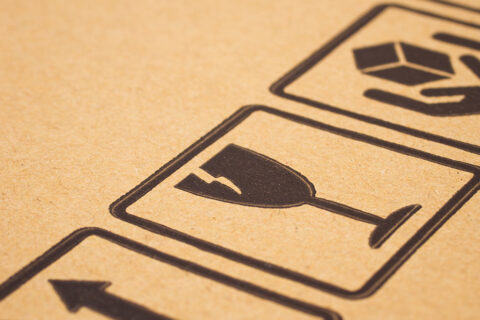Even homeowners who choose to handle moving on their own entrust their uprights, baby grands, and spinets to professional piano movers. This trend primarily stems from the numerous difficulties found in piano moving. In this blog post, we list eight common factors that can complicate even the most straightforward piano move.
-
Access Point
Most of your belongings exit your current house and enter your new home through the front door. However, large items like your piano may have to pass through larger access points like a sliding patio door, French doors, or a balcony door.
The alternative access point may present your movers with additional challenges. For example, if the piano has to go through a balcony door, the movers must use a crane or lift to get the piano up to the second story.
-
Hallway and Door Dimensions
Pianos are notoriously difficult to lift in part due to their shape that provides few secure handholds during transportation. These unwieldy characteristics increase the chance of property damage and injury, especially when paired with homes that are difficult to navigate.
If your house has narrow doorways, low ceilings, or thin hallways, your movers may have to partially or completely disassemble the piano to get the instrument out.
-
Instrument Size
In addition to the difficult shape of most pianos, these instruments often weigh more than any other piece of furniture in the home. Even the smallest piano types, such as consoles, weigh between 300 and 400 lbs. Larger piano types, such as grand pianos, can weigh between 1,000 and 1,200 lbs.
Movers use specialized dollies, floor covers, and stabilizing straps in order to properly and securely lift these instruments when piano moving.
-
Obstructions
One of the factors that can alter any moving estimate is the number of obstructions that the movers have to maneuver around while carrying items to the truck. This principle holds particularly true in piano moving.
When you prepare for a piano move, remove all other furnishings. If possible, remove any overhanging light fixtures, decorative hardware, and other architectural items that could stand in the moving team’s way.
-
On-site and En Route Distance
Because pianos pose such specific transportation challenges, distance is an important factor both on-site and during the moving process as a whole. Clear an area for the moving truck to park as close to the piano’s access point as possible.
The more distance the movers must navigate on outdoor walkways or landscaping, the greater the danger to your piano and the larger the cost to you.
Additionally, the distance between your current address and your future home may affect the cost of piano moving. These instruments must be correctly secured and padded during shipping. Pianos are also highly susceptible to environmental changes so piano movers must take these factors into account.
-
Seasonal Weather
As a piano owner, you may know that your piano is vulnerable to changes in temperature and humidity. However, you may not realize how much these factors can complicate the average move.
If possible, move during a temperate season when your piano is less likely to encounter high temperatures and humidity levels while en route. Inquire about climate controlled transportation and ensure that any storage takes place in a unit with both temperature and moisture control.
-
Specialty Services
When you hire movers for the average relocation, they may spend the majority of the process picking up, shifting, and loading boxes. However, piano moving often includes far more steps than simply lifting and moving the instrument.
Your piano mover may also have to partially or fully disassemble the instrument, fully cover delicate finishes, and so on. Some piano moving companies even offer tuning after the move or partner with a third party tuner who can ensure your piano is in perfect working order.
These specialty services require addition logistical planning and may increase your piano moving costs.
-
Stairs
Perhaps the most visible factor in the difficulty of piano moving is the number of stairs in your home. Staircases can be so tricky to navigate with pianos that many moving companies charge a flight fee if the instrument travels up or down more than one floor.
If your stairs are narrow, have an ornate banister, or curve, these characteristics may also make the process more complicated.
Anytime you have an upcoming move with a piano, partner with an experienced piano mover to ensure that your instrument arrives ready for your next practice session, family sing-along, or scheduled music lesson. If your situation includes any of the factors listed above, discuss these concerns with your mover.
For comprehensive moving services, including specialty item moving such as piano moving, trust the experts at Bekins.

